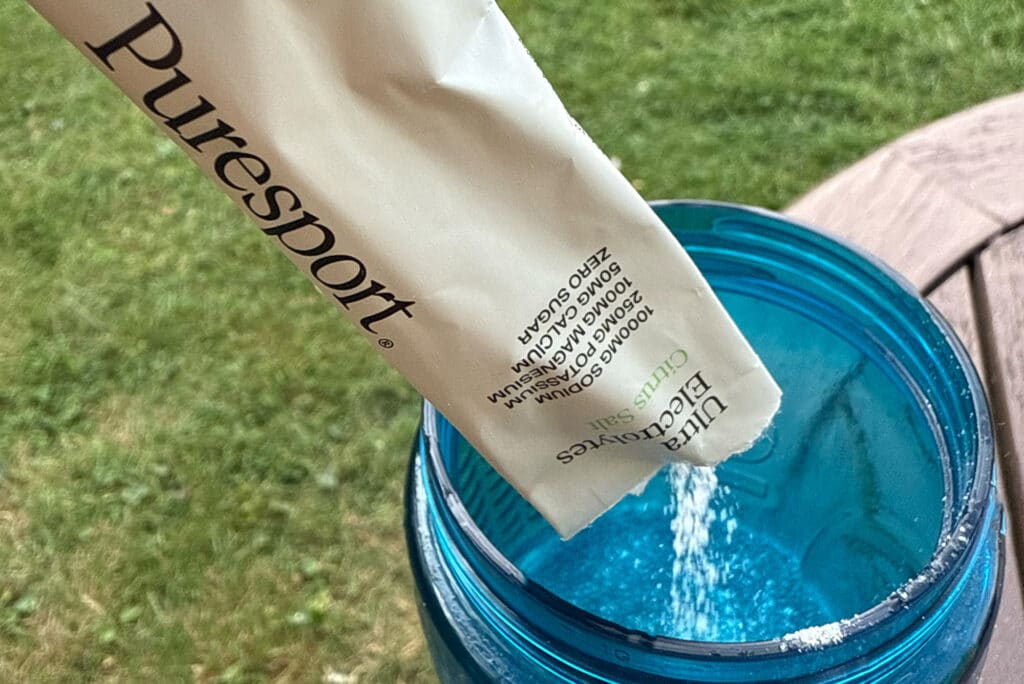
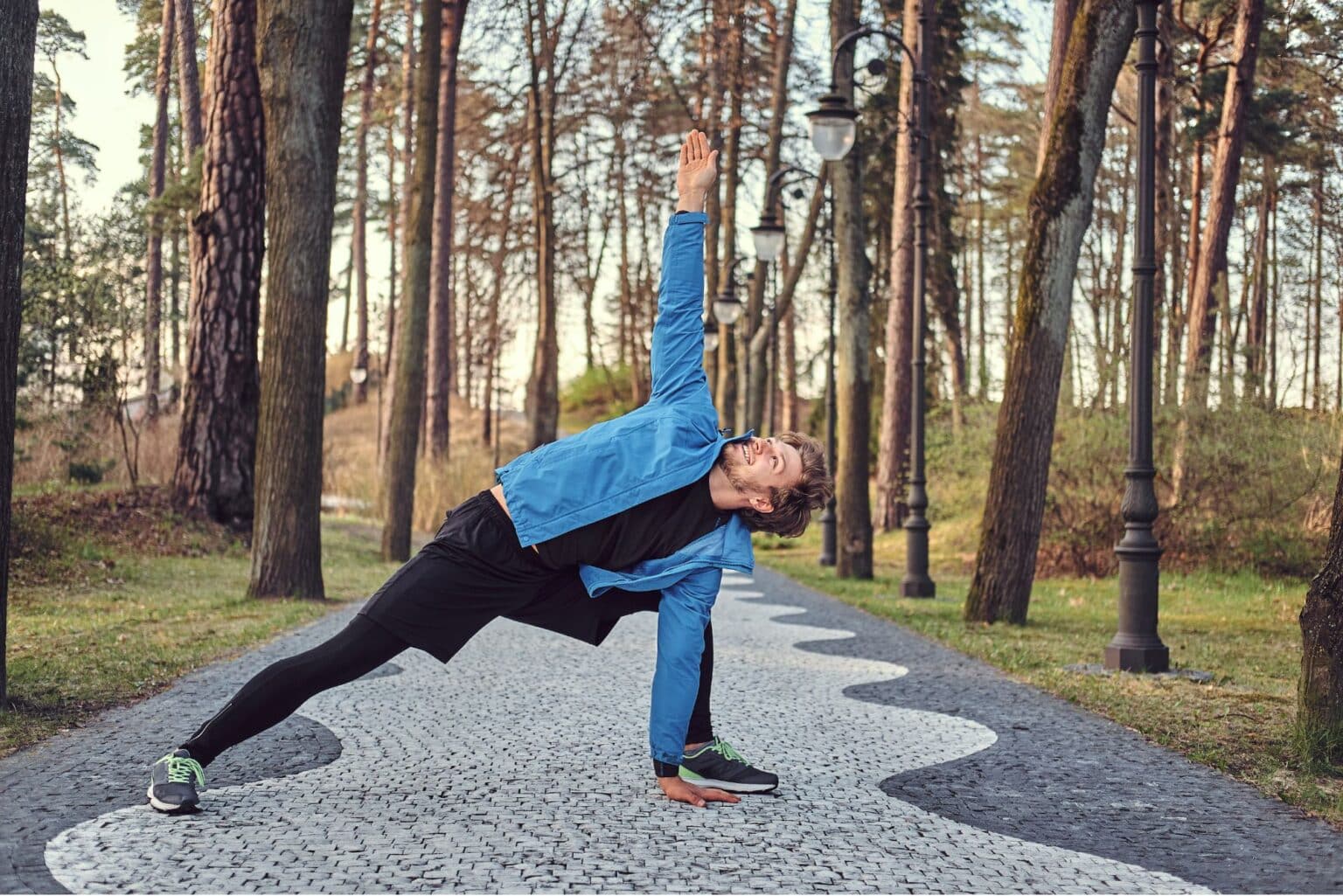
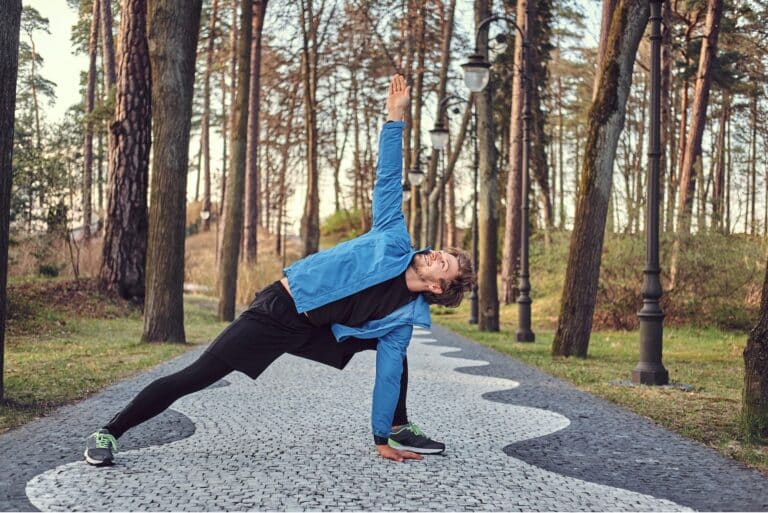
Runners are no strangers to muscle soreness, stiffness and tightness.
The repetitive nature of running can take a toll on the body, especially if proper stretching and recovery techniques are not incorporated into a training regime. This is where yoga comes in.
Yoga is an ancient practice that combines physical postures, breathing techniques and meditation to promote overall well-being. It can be a great addition to a runner’s routine, as it helps improve flexibility, balance, strength—including building core strength, which is essential for stability and injury prevention—and mental focus.
Yoga also helps runners become more flexible by targeting areas like the hips, hamstrings, and lower back. In this article, we will discuss how incorporating yoga into your training can benefit you as a runner.
Yoga is becoming increasingly popular among runners as a low-impact exercise that enhances performance and reduces injury risk. Yoga can also serve as a valuable workout for runners, complementing their running routine. By focusing on strengthening and stretching muscles, yoga helps address the tightness and imbalances caused by repetitive running movements. Specific yoga exercises target these problem areas for runners. Key areas like hip flexors, quads, and hamstrings benefit greatly from regular practice.
In addition, yoga improves breathing efficiency, mental focus, and stress management, all of which contribute to better running performance and recovery. Regardless of experience level or running style, many runners find yoga to be a valuable addition to their routine, supporting both their physical and mental well-being.
Yoga offers a multitude of benefits for runners, making it an ideal cross-training activity. Here are some of the key ways in which yoga can enhance your running performance and overall well-being:
One of the most significant benefits of yoga for runners is improved flexibility and mobility. Regular yoga practice helps to lengthen tight muscles, such as the hip flexors, quads, hamstrings, and calves, which can become shortened from repetitive running movements. Yoga is especially effective for loosening tight hips, a common problem for many runners. This increased flexibility not only helps to prevent injuries but also allows you to move more efficiently while running.
Yoga is not just about stretching; it also involves holding poses that require strength and stability. This can be especially beneficial for runners who often rely on the same muscles over and over again while running. By incorporating yoga into your routine, you can strengthen smaller, stabilising muscles that are often neglected in traditional workouts. This improved strength and stability can help improve your overall running form and prevent injuries. Many yoga practices include balance poses that require standing on one leg, which helps improve stability and proprioception for runners.
Running is known to be a great stress reliever, but adding yoga to your routine can take it to the next level. Yoga incorporates deep breathing techniques that can help calm the mind and reduce stress levels. It also encourages mindfulness and being present in the moment, which can help alleviate anxiety. As a result, combining running with yoga can have a significant impact on your mental well-being, helping you feel calmer and more centred.
Yoga can help reduce the risk of common running injuries, such as knee and hip injuries, by strengthening the surrounding muscles. It can also improve flexibility and range of motion, which is crucial for preventing muscle strains and tears. By incorporating yoga into your running routine, you are less likely to experience injuries that could hinder your progress and cause setbacks in your training.
Yoga can seem intimidating at first, with all the different poses and Sanskrit names. However, with a little bit of practice and guidance, you will begin to understand and feel comfortable in each pose. Understanding the correct alignment and modifications for each pose is crucial to getting the full benefits and preventing injury.
Being aware of your body’s position in space is also key to maintaining proper form and improving balance. As you continue your yoga journey, you will also learn about the history and philosophy behind each pose, giving you a deeper understanding of this ancient practice.
Yoga poses like half pigeon and warrior can help runners stretch and strengthen key muscles, including the hip flexors and glutes. Proper alignment and form are crucial for maximising benefits and minimising injury risk. Working with a qualified yoga teacher can help runners learn correct alignment and modifications.
Runners should begin with short, gentle yoga routines, gradually increasing duration and intensity as comfort and familiarity grow. Joining a yoga class can provide structure and guidance for beginners, helping them learn proper technique and stay motivated. Always listen to your body, performing only what feels comfortable and safe, and avoid any poses that cause pain.
Incorporate yoga two to three times per week, focusing on poses that target key areas such as the hips, legs, and lower back. A consistent yoga practice can enhance strength, flexibility, and balance, ultimately improving running performance and reducing injury risk. Runners are encouraged to try different types of yoga classes, such as Hatha, vinyasa flow, or restorative classes, to find what best suits their needs.
Here are some basic yoga poses that can greatly benefit runners by improving flexibility, building strength, and aiding recovery:
This pose is great for runners as it stretches the hamstrings, calves, and shoulders.
How to do it:
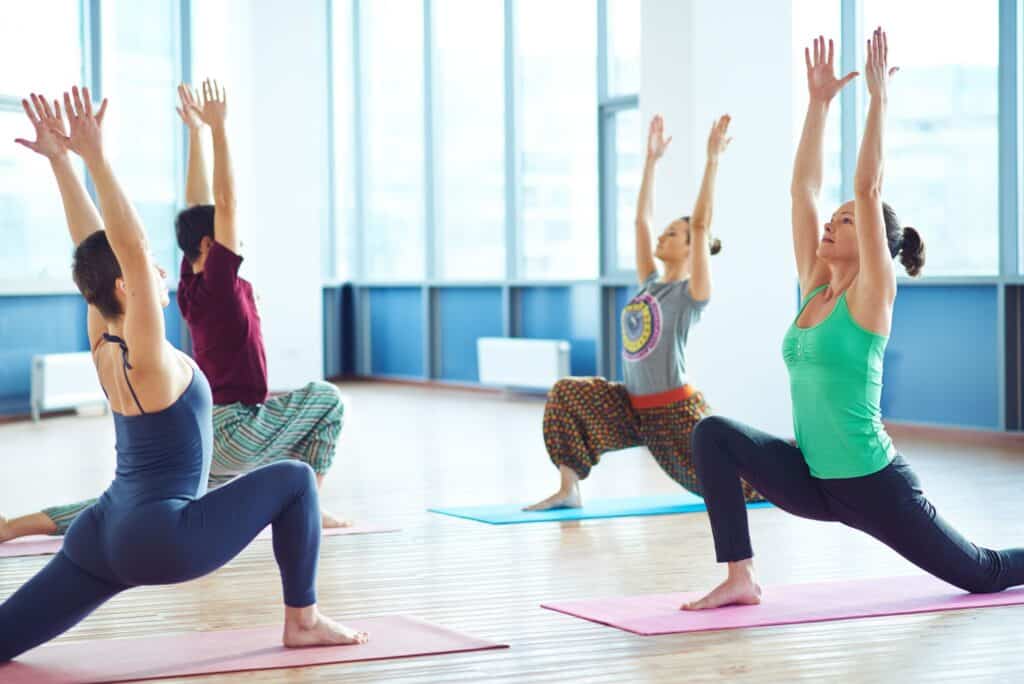
The low lunge is an essential pose for runners as it targets the hip flexors, quadriceps, and hamstrings, and also helps improve ankle mobility.
How to do it:
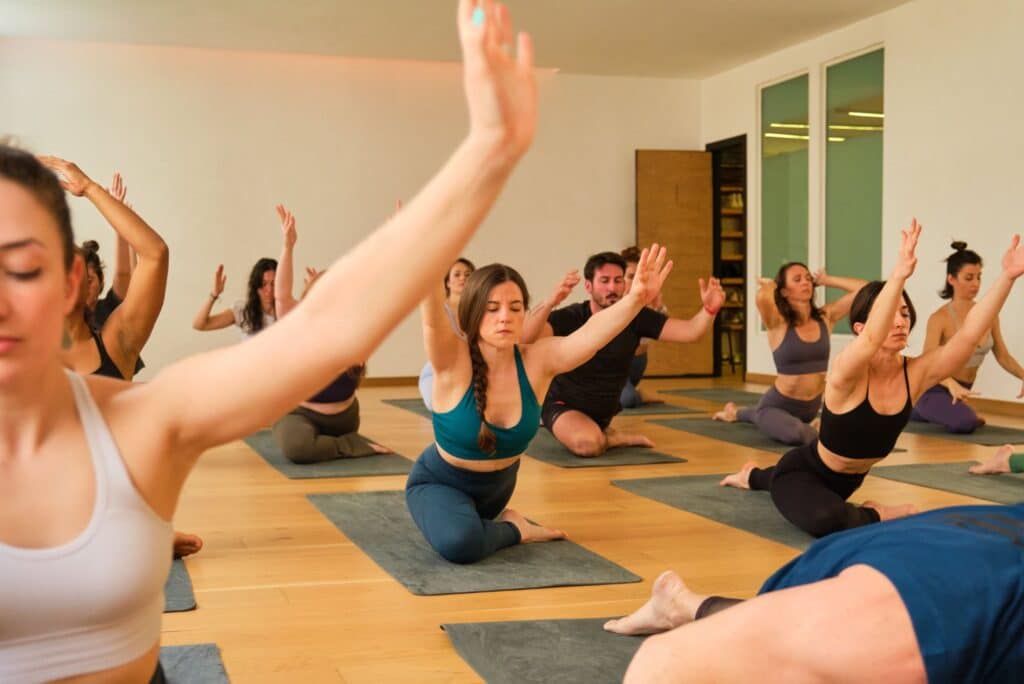
This intense hip opener is perfect for releasing tension in tight hip flexors and quads caused by running.
How to do it:
This is a restorative pose that helps relax the back and hips.
How to do it:
This move helps to strengthen and stretch key muscles such as hip flexors and glutes. Warrior pose also engages and stretches the inner thighs.
How to do it:
Yoga is a powerful tool for runners to prevent injuries by strengthening the muscles that support key joints like the knees and hips. Incorporating poses that target common areas of tension, such as the hamstrings, quads, and hip flexors, can improve flexibility and reduce strain.
Adding yoga to your warm-up and cool-down routines helps lower the risk of injury and promotes faster recovery. Remember to listen to your body, take regular rest days, and prioritise self-care to prevent overuse injuries and avoid burnout.
Deep, controlled breathing is essential in yoga. Learning to breathe consciously during both yoga and running is important for enhancing performance, relaxation, and recovery. It can help runners relax and focus during runs. Yoga teaches runners to use their breath to calm the nervous system, reduce stress, and improve performance. Breathing techniques, like breathing smoothly through the nose, can enhance endurance and reduce fatigue while promoting optimal performance and relaxation. Focusing on breath also helps runners stay present and aware, improving overall performance.
Want to learn more about how breath training can help runners? Check out our article, ‘Breath Before Speed: How Breath Training is Shaping the New Era of Runners.’
Yoga is an invaluable tool for runners, offering a wealth of benefits that extend beyond the mat. By integrating yoga into your training, you can significantly enhance flexibility, build strength, and improve your overall running performance.
Yoga helps reduce injury risk, aids in faster recovery, and fosters a deeper mind-body connection, all of which are crucial for consistent and enjoyable running.
Whether you’re just starting your running journey or you’re a seasoned marathoner, yoga can elevate your fitness and well-being, leading to a healthier, more balanced life.
Curious to learn more? Check out our articles: Why Yin Yoga Should Be a Runner’s Best Friend and Cool Down Yoga for Runners.
Embrace the power of yoga, and unlock your full potential as a runner, experiencing enhanced performance and a newfound sense of well-being.
Yes, most forms of yoga are gentle and can be modified to suit any fitness level. However, it is always important to consult with a doctor or certified yoga instructor before starting a new exercise routine.
It depends on individual preferences and goals, but incorporating at least 20 minutes of yoga into your weekly routine can greatly benefit runners.
Absolutely! Yoga can help relax the body and mind on rest days, while also aiding in post-run recovery by stretching out tight muscles and releasing tension. For example, after a run, you can do a quad stretch by pulling your heel toward your butt, focusing on a gentle pull to enhance flexibility and recovery.
Aside from improving flexibility, balance, and strength, yoga can also help prevent injuries by targeting specific muscle groups that are commonly used in running. It can also improve breathing techniques and focus, which can be beneficial during long runs or races. Additionally, practising yoga regularly can help reduce stress and anxiety, leading to an overall improvement in mental well-being.
Join our mailing list to stay up to date with the latest UK running events, training tips, and exclusive offers on running products. Rest assured, we value your privacy and would never dream of selling your address. Sign up now…
Share this article
I’ve missed a week of the plan from illness, what should I do? My race...
I am going to be away on a family holiday, and I won’t have much...
Do you think it’s important to get my running gait analysed? I’ve been running for...
I’ve come across advice saying to use this formula for Heart Rate low intensity training https://philmaffetone.com/180-formula/ ,...
In your training plans you say most weeks on the long run, to finish at...
I have a spring marathon, I’m a beginner and never done a marathon. I see...
We’re here to make sure you’re up-to-date with the latest running tips, events and product discounts – we’ve always got your back! Rest assured, we value your privacy and would never dream of selling your address.
BONUS: Sign up today and receive a FREE code for our Sub-4-Hour Marathon Plan